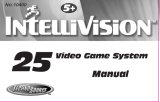
VOLLEYBALL 14 l Visit www.PocketRadar.com/support
Minimum 15 to 20 feet radar to ball
The coach is sitting high in the bleachers to
ensure the radar is at the same height as the ball
is being served. If you do not have bleachers
behind the server, you would need to find a tripod
or mount the radar to the same height as the ball
is making contact with the server’s hand.
Carefully aim the radar beam allowing the ball to
travel down the beam path.
Radar must be a minimum of 15-20 feet from the
ball, this allows the spot size of the radar beam to
spread out.
Serve the ball directly in line with the radar beam.
Only count the speeds where the ball remains
inside the radar beam.
1.
1.
2.
3.
2.
3.
4.
IMPORTANT TIPS
Radar guns focus radio waves down into a
narrow beam, like a flashlight beam. Aim carefully
down the beam to get good readings.
Check for interference by holding down the radar
main button and scanning the area when there
are no balls in flight.
Ensure your set-up is safe to prevent the radar
from being hit by the ball and any property
damage or injury.
SET-UP INSTRUCTIONS
VOLLEYBALL
MEASURING VOLLEYBALL OVERHAND SERVE
CORRECT SET-UP









